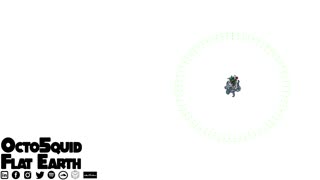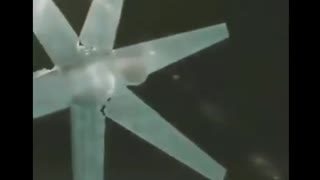Premium Only Content

The Flat Moon Over the Flat Earth
NASA and modern astronomy maintain that the Moon is a solid, spherical, Earth-like habitation which man has actually flown to and set foot on. They claim the Moon is a non-luminescent planetoid which receives and reflects all its light from the Sun. The reality is, however, that the Moon is not a solid body, it is clearly circular, but not spherical, and not in any way an Earth-like planetoid which humans could set foot on. In fact, the Moon is largely transparent and completely self-luminescent, shining with its own unique light.
The Sun’s light is golden, warm, drying, preservative and antiseptic, while the Moon’s light is silver, cool, damp, putrefying and septic. The Sun’s rays decrease the combustion of a bonfire, while the Moon’s rays increase combustion. Plant and animal substances exposed to sunlight quickly dry, shrink, coagulate, and lose the tendency to decompose and putrify; grapes and other fruits become solid, partially candied and preserved like raisins, dates, and prunes; animal flesh coagulates, loses its volatile gaseous constituents, becomes firm, dry, and slow to decay. When exposed to moonlight, however, plant and animal substances tend to show symptoms of putrefaction and decay.
In direct sunlight a thermometer will read higher than another thermometer placed in the shade, but in full, direct moonlight a thermometer will read lower than another placed in the shade. If the Sun’s light is collected in a large lens and thrown to a focus point it can create significant heat, while the Moon’s light collected similarly creates no heat. In the "Lancet Medical Journal,” from March 14th, 1856, particulars are given of several experiments which proved the Moon's rays when concentrated can actually reduce the temperature upon a thermometer more than eight degrees.
So sunlight and moonlight clearly have altogether different properties, and furthermore the Moon itself cannot physically be both a spherical body and a reflector of the Sun’s light! Reflectors must be flat or concave for light rays to have any angle of incidence; If a reflector’s surface is convex then every ray of light points in a direct line with the radius perpendicular to the surface resulting in no reflection.
-
 6:50
6:50
EricDubay
1 month agoI Need Your Help
2.55K40 -
 4:59
4:59
0cto5quid
3 years ago $0.09 earnedFlat Earth
5563 -
 14:38
14:38
Op Freedom
3 years agoA FLAT Earth Presentation
3.96K48 -
 1:29
1:29
Op Freedom
3 years agoFlat Earth Hungary
2.69K18 -
 43:03
43:03
RiftTV
8 hours agoLeftists Scheme To Destroy the Economy | Guest: Brad Miller | DC Dive
30.5K5 -
 6:52
6:52
ThinkStory
17 hours agoThe INSANE Pennywise Daughter Theory - IT: Welcome to Derry
22.8K -
 7:49
7:49
Blackstone Griddles
14 hours agoEasy Weeknight Meals: Southwest Patty Melt
24.8K -
 52:51
52:51
A Cigar Hustlers Podcast Every Day
1 day agoEpisode 2 Hustler Every Day
19.2K -
 LIVE
LIVE
FyrBorne
3 hours ago🔴Battlefield 6 Live M&K Gameplay: Assault Might Actually Be OP In REDSEC
82 watching -
 36:10
36:10
ZeeeMedia
17 hours agoCash Quickly Becoming ILLEGAL & Silicon Valley's Devilish Endeavors | Daily Pulse Ep 140
67.5K43